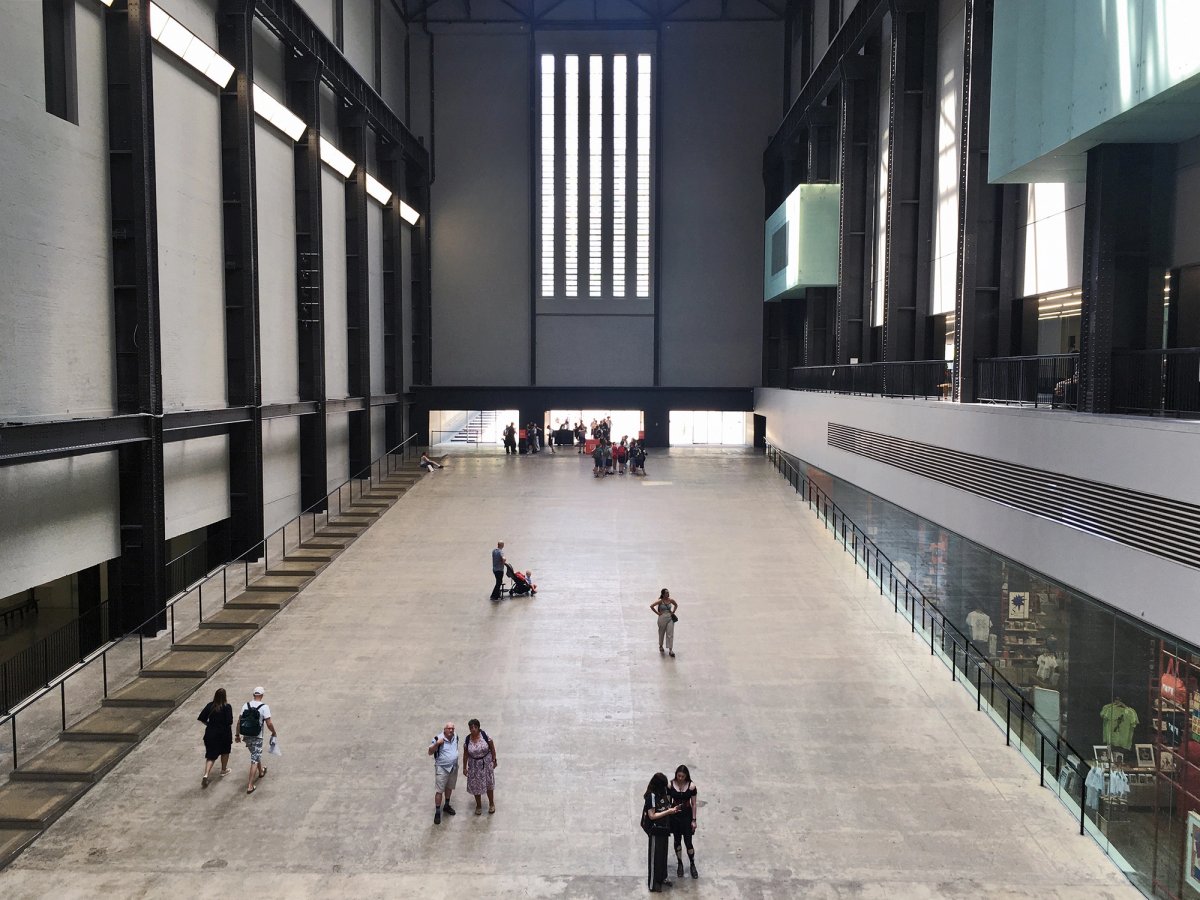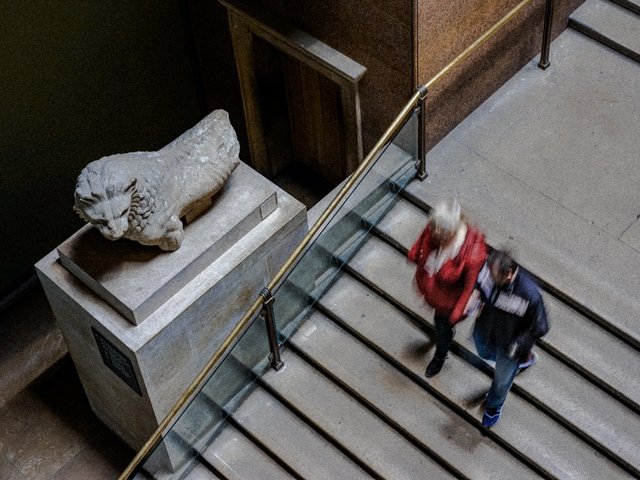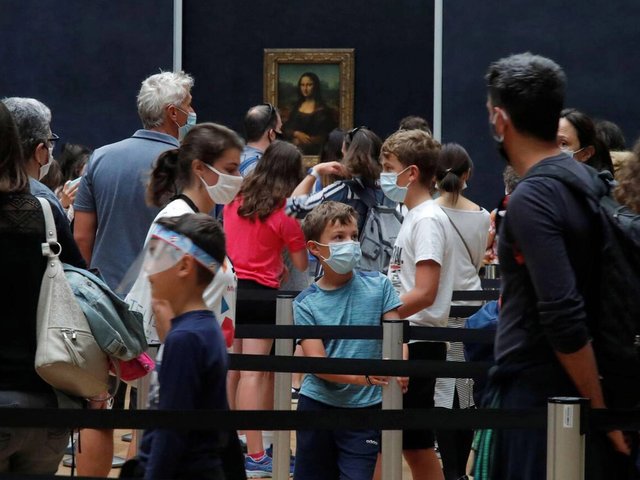• Tate Modern alone had 609,000 visitors from Europe aged 16 to 24 in 2019-20, but just 357,000 in 2023-24
• Tate’s domestic visitor numbers at 95% of pre-Covid level, but international numbers at around 61%
• Government statistics show visitors from EU to UK have dropped by one-tenth compared with 2019
• Mixed picture at other UK museums: British Museum’s percentage of overseas visitors close to 2019 levels
In the six months since Tate reported a deficit budget for 2024-25, some critics have pointed at the museum group’s programming as a root cause for its financial plight. They argue that curatorial strategies are to blame for a noted decline in footfall in recent years and therefore in income from paid-for exhibitions, catering and shops (the permanent collections are open to the public without charge).
The Art Newspaper’s annual visitor figures report, published in April, showed how attendance at Tate institutions in 2024 was indeed significantly lower than in 2019 (a year of record highs)—Tate Modern saw 25% fewer visitors than before the Covid-19 pandemic, Tate Britain was down 32% and Tate St Ives had a 37% drop in attendance. (Tate Liverpool remains closed until 2027.)
The Art Newspaper’s latest research—combining government figures, university enrolment and tourism statistics, Arts Council and Art Fund surveys, and Tate’s recent internal research—shows that while Tate, like other national museums, sets great store by programming as a factor in attracting visitors, footfall is shaped as much, if not more, by external socioeconomic factors, national and international. Tate’s own research, group spokespeople tell The Art Newspaper, indicates that, while attendance by domestic audiences is close to 95% of pre-Covid levels—there has been a marked drop in overseas visitors to Tate institutions, especially in people from Europe aged 16 to 24. This age group, Tate says, is a key demographic for the group and for art museums as opposed to “museum museums”.
It is worth noting that in The Art Newspaper’s attendance figures survey, Tate Modern—which accounts for around 75% of the group’s visitors in any given year—nonetheless still ranked fifth among the world’s most visited art museums, behind the Louvre, the Vatican Museums, the British Museum and New York’s Metropolitan Museum of Art on Fifth Avenue. Since 2014, it has hovered between the seventh and third spots (apart from in 2021, when Covid closures saw it sink to the 16th).
That list of competitors also shows that Tate Modern remains the world’s number one modern and contemporary art museum. This too is a position it has held since 2014, apart from in 2021, when it was overtaken by Paris’s Centre Pompidou and the Museum of Modern Art in New York.
However, while the popularity of Tate Modern and by extension of Tate as a whole, is not in doubt, the dip in footfall cannot be ignored. Tate’s director of audiences and innovation Liam Darbon and his team have dug into more granular demographic shifts within the museum group’s visitors over the past decade. These shifts correlate with demographic shifts among visitors to the UK at large.
Darbon’s internal research (based on exit surveys in all galleries; data and insight sharing between a consortium of other museums and galleries across the UK; and data from the UK tourism board and other cultural sector trade bodies) has revealed that, discounting Tate Liverpool (closed until 2027), the number of visitors across Tate galleries coming from within the UK in 2024 was almost the same as before the pandemic. As a Tate spokesperson puts it, “Tate’s domestic visitor numbers have recovered to around 95% of their pre-Covid level, whereas Tate’s international visitor numbers are at around 61% of their pre-Covid level.”
The average number of total visitors to Tate Modern, Tate Britain and Tate St Ives, in the three financial years before Covid (2017-18, 2018-19, 2019-20) was 7.4 million. Of that, Darbon’s team reports, about 3.8 million, on average, were from within the UK. The average number of total visitors for the two full post-Covid years (2022-23 and 2023-24) was 5.8 million. Of that, Tate says, roughly 3.6 million visitors were UK-based.
By contrast, the number of visitors from outside the UK dropped significantly, from around 3.6 million to around 2.2 million.

Tate director Maria Balshaw © Tate/Jai Monaghan
Visitors from Europe [aged] 16 to 24 [are] profoundly affected by the combination of Brexit changing their educational and work opportunities, and then CovidMaria Balshaw, director, Tate
The biggest finding for Maria Balshaw, Tate’s director, is the decline in young visitors from the EU, specifically in the 16-24 age bracket. Young people of that age group are a primary demographic for the museum group, accounting for one in six visitors to Tate Modern and Tate Britain. “The figures speak for themselves,” she says. “Tate Modern alone welcomed 609,000 visitors from Europe, between ages 16 to 24, in 2019-20 but then 357,000 in 2023-24. And if you think about that age of person: they are profoundly affected by the combination of Brexit changing their educational and work opportunities and then Covid profoundly affecting the end of their studies and the way they choose to live their lives. They are, in general, also travelling less.”
Research bears this out.
Data from the Office of National Statistics showthat the number of visitors from the EU hardly budged between 2015 and 2019 from 24 million each year, but by 2023, it had dropped to around 22 million. Still a significant number, to be sure. However, the granular makeup of those tourism numbers has shifted. Ross Bennett-Cook, a travel and tourism expert at the University of Westminster, says: “Young people are facing the cost of living crisis a lot more than Boomers and older generations. Gen Z and Millennials are the group who face the biggest strain when it comes to travel.”
Further, economists at the universities of Bath and Antwerp have found a decline in EU students taking up places at UK universities of between 48% and 64%. And the Migration Observatory at the University of Oxford has shown that net EU migration to the UK has fallen by almost 70% compared with 2016: more EU citizens are leaving the UK than coming. In both cases, the result is that there are fewer EU residents in the UK (students or otherwise) for EU friends and family members to visit.
Over its recent Birthday Weekender, Tate Modern welcomed 76,000 visitors over three days, “70% of whom were under 35”, says Balshaw. “That’s double what we’d normally expect for that kind of event. And our Tate Collective membership, which is for under-25s, has now got 180,000 live memberships. So what we’re doing in the galleries is really attracting younger visitors from the UK, which we’re really pleased about. Because, of course, if they love us when they’re 24, 25, they’ll be coming when they’re 55 or 70. But we’re not seeing that same group from the European countries coming because they’re just not in London in the same way.”
Darbon further underscores a “really steep decline” in visitors from north-east Asia. This correlates with UK travel tourism data, showing more sluggish growth relative to visitors from North America, Australia and Saudi Arabia.
The 16-25, 16-35 market is where you see the visitation shift away from a classic museum into an art gallery spaceLiam Darbon, director of audiences and innovation, Tate
While there are variations in audiences between the different Tates, Darbon says these demographic shifts are noticeable across the group. He also highlights that “the 16-25, 16-35 market is where you see the visitation shift away from a classic museum into an art gallery space”. In other words, to his mind, young adults are more important as a demographic to art galleries than to so-called “museum museums”, and the loss of young EU visitors is therefore more impactful.
This is less clear on the ground. As India Divers, the policy and ethics lead at the Museums Association puts it, “post-Covid visitor figures to UK museums remains a mixed picture”. She highlights the most recent figures from the Association of Leading Visitor Attractions (ALVA) that show institutions including the Natural History Museum, the National Portrait Gallery, the Museum of Liverpool, the Ulster Museum in Belfast, the Pitt Rivers Museum in Oxford, the Fitzwilliam Museum in Cambridge and the National Museum of Scotland all seeing notable growth in numbers in 2024.
A spokesperson for the British Museum—number three in the world—says, “Our most recent research shows that international visitors made up 64% of our audience. This is close to pre-pandemic levels, when international visitors made up 70% of our audience. Domestic visits continue to grow in real terms, and these same figures show that London visits overtook pre-pandemic numbers.”
At the same time, the Manchester Museum, the Royal Academy of Arts, Liverpool’s Maritime Museum, National Museum Cardiff and Scotland’s Gallery of Modern Art all had lacklustre years. The Science Museum, whose visitor numbers dropped by 4% relative to 2023, is yet to see international visitors return to pre-pandemic levels. According to a museum spokesperson, “In 2024/25 around a third of all visits were made by international visitors compared to an average of 46% pre-pandemic. The reduction in international visitors has been partly offset by an increase in UK-based visitors.”
Of the 324 museum directors who responded to Art Fund’s 2024 Museum Director’s Research survey, 57% saw overall visitor numbers increase over the previous year, but only 25% saw a specific increase in international visitor numbers.
The socioeconomic factors
According to Arts Council England’s Annual Museums Survey, which was published in March, “the average change in visitor numbers across museums is –10%, three in ten museums have seen their visitor numbers drop by more than 25% compared to five years ago.” In Scotland, meanwhile, Museums Galleries Scotland’s 2024 Survey of Scotland’s Museums and Galleries, published in October 2024, noted that visits to Scottish museums in 2023-24 were higher than in 2019-20, with 21% of visitors local, 36% national and 42% international.
All parties, of course, insist that programming is crucial to attracting audiences. Darbon says Tate expects continued growth, “particularly in these audiences we’re talking about today, because of the pull of the programme”. The “visitor perspective”, says the British Museum spokesperson, is central to the Masterplan launched in 2024. And the Science Museum’s public, its spokesperson says, is drawn by “our thought-provoking exhibitions, free new galleries and engaging experiences”.
But if Tate’s research shows anything, it is that footfall is shaped as much, if not more, by external socioeconomic factors, national and international.
Furthermore, in UK museums and galleries where collections are free to access, footfall, and everything else that intrepid museum directors have devised to raise funds, is only ever going to bring in so much money.
That cultural institutions’ survival depends on a lot more than visitor numbers is highlighted by the alarm the UK government’s recently announced Spending Review has triggered. Cultural organisations are set, yet again, to face pay reviews and workforce reductions, amid real-term cuts to government funding over the next four years.
The public accounts committee, meanwhile, has reportedly warned the Treasury that over 50% of local councils in England face insolvency. And that never bodes well for local government arts and culture funding and the museums and galleries that depend on it.





